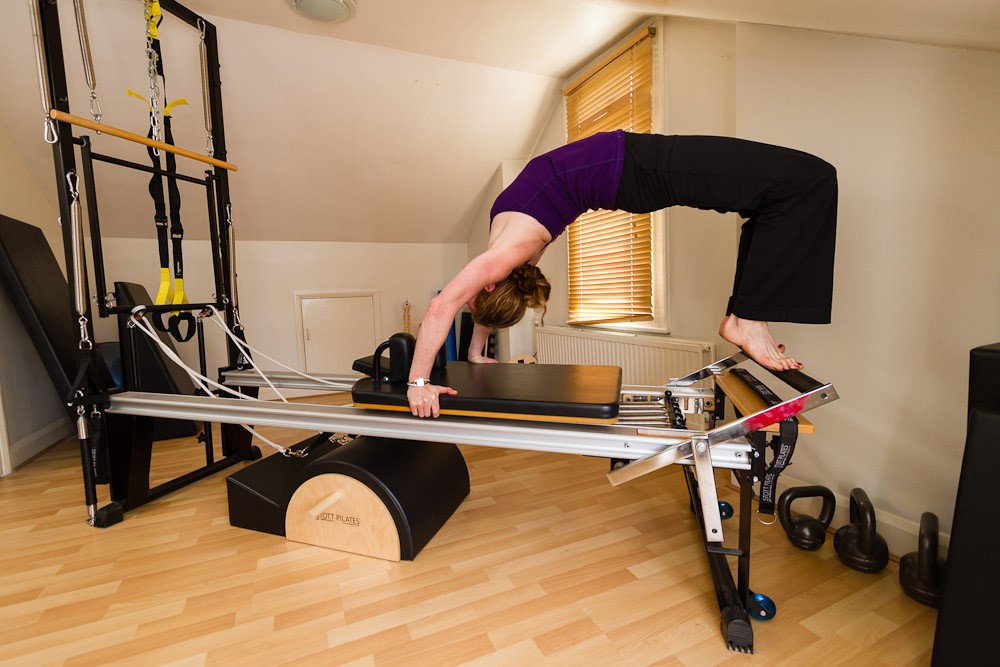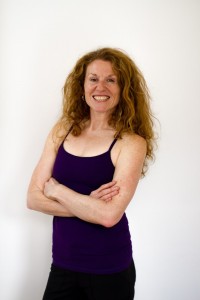Why I Chose STOTT PILATES
by Alison Salmond
Choosing any training programme, whatever the subject area can be extremely time consuming and challenging for anyone. At present, there are many Pilates instructor training programmes; some offer mat-based courses, whilst others offer both mat- and equipment-based training programmes. Aspects to consider when selecting your programme are: timing, location, reputation, brand, modular or apprenticeship format, prerequisites, physical ability, anatomical knowledge and cost. With so much corporate marketing and choice, no wonder potential instructors are finding it increasingly confusing and difficult to choose the right route.
STOTT PILATES Offer A Modular Approach
For me, anatomy is a passion, sometimes extremely easy to follow, whilst at other times incredibly difficult. One thing is for certain, the human form is an amazing instrument and although many of us love to dissect it to its individual parts, it is also very clear that those individual parts work together as one.
As a UK registered Osteopath and a STOTT PILATES Lead Instructor Trainer, I believe that both Pilates and Osteopathy have many similar principles: breathing is vital for life; structure and function are inter-related; the body can heal itself, given the correct environment; and, most importantly, all the body’s systems most certainly work as a unit.
After 30 years of teaching, both as a tutor and instructor, I still consider myself to be a bit of a novice. I had very little experience of Pilates prior to undertaking the STOTT PILATES programme. I did what I called “proper exercise” – long distance running, weights and high intensity aerobic training (no wonder my hips scream at me!). Pilates was just a method for dancers wasn’t it? As luck would have it, I was chosen to undertake the STOTT PILATES full certification, with the ultimate goal of working towards Instructor Trainer level. This was completed via a modular approach, layering the essential and intermediate courses first, prior to adding on the advanced repertoires and the injuries and special populations modules. Both a colleague and I took approximately two years working our way through the modules (plus additional practical log book hours) prior to completing the final exam. This was not an easy task, and I compare my final STOTT PILATES full certification exam to my Osteopathy Finals!
STOTT PILATES Provide Unbeatable Student Resources
On enrolment, my first thoughts were that I was just learning some new exercises? How wrong I was! There was so much more to learn. Learning the start positions and breath patterns for each of the exercises was just the beginning. The learning process continued with knowing the true essence to each of the exercises, how the muscles were working at each point of the exercise, the use of breakdowns and possible modifications that could be relevant for teaching the person in front of you and the sequence of exercises itself. Other aspects included effective teaching skills; this was so much harder than teaching a gym-based programme, with much more detail to consider. Luckily, I already had teaching experience but in order to correct effectively, I also had to develop a real “eye for detail,” so that the exercises were performed correctly and safely throughout.
With literally hundreds of exercises and modifications to learn, it was made a little easier with the excellent STOTT PILATES student resources provided. These were an essential tool to learning and undeniably the best student resources I have ever seen (and I should know I was involved in writing YMCAfit student resources for ten years!)
The manuals have everything that you need to know about each of the exercises, from the essence to the breath pattern. Along with the manuals, student resources also include DVDs, which are an excellent visual tool to observe the exercises and their sequencing, as well as a great resource to use whilst practising your own physical review. Without a doubt, these resources made it possible to pass the final full certification examination at the required 90%+.

Anatomical Referencing and Comparison to Evidence-based Research
Did I say I love anatomy? My first real introduction post school was in the 1980s studying for my “Exercise to Music” exam. After that, I just wanted to know more! I even undertook an MSc in Exercise Science back in the 1990s, followed by Osteopathy in an attempt to quench this desire.
The evidence-based research that the STOTT PILATES team have incorporated into their course materials is the foundation of the brand. The formation of the STOTT PILATES basic principles rely on this research and, as much as I believe in these concepts, it is also evident that some of these findings are taken out of context by others. What I found to be incredibly useful as a student is that by breaking the exercises down to components (just like anatomy), it helped me to understand what was meant by stability. STOTT PILATES promote dynamic stability, allowing movement of the body as a whole, whilst ensuring stability at a chosen area. This is a key concept and extremely important in order for the body’s individual parts to work as a unit. In a rehabilitative setting, for example, I may choose to dissociate a particular joint to create stability and then reintegrate to create dynamic stability.
STOTT PILATES Outline Clear Guidelines and Objectives
In order for any examination to be objective, students must be given clear guidelines on both the course and the final examination. The STOTT PILATES manuals are the foundation to these objectives; topics that are not included in either the course objectives or student resources are considered additional knowledge. Of course, students are required to have a basic knowledge of anatomy and if this is not the case, instructors will recommend some additional reading, along with the anatomical terms and muscles listed in the student resources, to help students succeed. For those who like more of a classroom-based learning environment, there are also additional workshops that cover the anatomical knowledge that is required to pass the exam.
In the UK, we have an additional anatomy and physiology e-learning package that has been developed by Central YMCA (STOTT PILATES UK Licensed Training Centre), which is an excellent interactive tool for students.
Still Learning?
STOTT PILATES has been an excellent foundation and I am very grateful that this excellent method has allowed me to further develop my teaching skills with both clients and students. It has also provided me with a curiosity to truly understand the differences, within my own body, between the original Joseph Pilates method and other contemporary Pilates methods. Experiential learning is one of the best methods of learning, especially to this eternal student.
Have Fun, Ask Questions, Keep Learning.
 Alison Salmond MSc, BOst, PGCE
Alison Salmond MSc, BOst, PGCE
Specialist Musculoskeletal Osteopath
UK STOTT PILATES Lead Instructor Trainer
Alison has been involved in the health and fitness industry for nearly 30 years. She originally started as a group instructor, later progressing into tutoring and curriculum development at YMCAfit. Over the past 13 years, she has fully absorbed herself into the Pilates method, both as an instructor and tutor. She has been a STOTT PILATES Instructor Trainer since 2007 and was awarded the prestige title of Lead Instructor Trainer for STOTT PILATES in 2012. She delivers all STOTT PILATES post rehabilitation education programmes at London Central YMCA and is now working towards teaching the STOTT PILATES clinical rehabilitation programmes. She is a registered osteopath and now combines osteopathy and Pilates to help her clients get the appropriate individual treatment plan.

